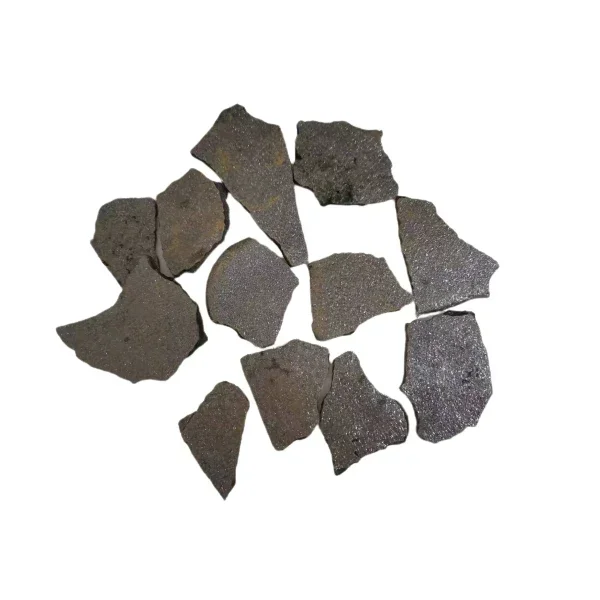The Role of Vanadium Pentoxide in Energy Storage Solutions
As the demand for renewable energy continues to rise, finding efficient and reliable energy storage solutions is becoming increasingly important. Among the leading contenders in this field is vanadium pentoxide, a versatile compound that has shown immense potential in energy storage systems. In this article, we will explore the role of vanadium pentoxide in energy storage and its ability to revolutionize the way we store and utilize renewable energy.
I. Understanding Vanadium Pentoxide
Vanadium pentoxide (V2O5) is a compound derived from vanadium, a transition metal abundantly found in the Earth's crust. Its unique properties make it suitable for various energy storage applications. V2O5 can be used in different forms, such as powders, flakes, and thin films, making it adaptable to diverse energy storage technologies.

II. Vanadium Redox Flow Batteries (VRFBs)
Introduction to VRFBs: Vanadium pentoxide plays a vital role in Vanadium Redox Flow Batteries (VRFBs), a type of rechargeable battery used for energy storage. VRFBs consist of two tanks containing vanadium electrolyte solutions with different oxidation states. The vanadium pentoxide acts as a catalyst at the positive electrode, facilitating the redox reactions during charging and discharging.
Advantages of VRFBs: VRFBs offer several advantages over traditional battery technologies. Firstly, they have an extended cycle life, capable of enduring thousands of charge-discharge cycles without significant capacity degradation. Secondly, VRFBs have high energy efficiency, enabling efficient energy storage and retrieval. Moreover, they can be easily scaled up to meet large-scale energy storage requirements, making them ideal for grid-level applications.
III. Grid-Level Energy Storage
Harnessing Renewable Energy: One of the main challenges in renewable energy utilization is its intermittent nature. Vanadium pentoxide, through VRFBs, provides a solution to this challenge by enabling efficient grid-level energy storage. Excess energy generated from renewable sources during off-peak periods can be stored in VRFBs and discharged when demand is high, ensuring a stable and reliable power supply.
Grid Balancing: Vanadium pentoxide-based energy storage systems help balance the grid by providing ancillary services such as frequency regulation and peak shaving. These systems can rapidly respond to fluctuations in energy supply and demand, stabilizing the grid and preventing blackouts or voltage imbalances.

IV. Integration with Solar and Wind Farms
Solar Energy Storage: Vanadium pentoxide-based energy storage systems are particularly well-suited for solar farms. Solar energy generation peaks during the day when demand may be low. By storing excess energy in VRFBs, solar farms can ensure a continuous supply of electricity even after sunset, maximizing the utilization of renewable energy resources.
Wind Energy Storage: Similarly, vanadium pentoxide-based energy storage systems are beneficial for wind farms. Wind energy production varies with wind speeds, which are unpredictable. By storing excess energy during periods of high wind speeds, VRFBs can smooth out fluctuations in wind power generation, ensuring a consistent and reliable energy supply.
V. Advantages of Vanadium Pentoxide in Energy Storage
High Energy Efficiency: Vanadium pentoxide-based energy storage systems have high energy efficiency, enabling effective utilization of stored energy and minimizing energy losses.
Long Cycle Life: VRFBs employing vanadium pentoxide as the catalyst exhibit a long cycle life, reducing the need for frequent battery replacements and lowering overall maintenance costs.
Scalability: The use of vanadium pentoxide allows for the scalability of energy storage systems, making them suitable for both small-scale and large-scale applications. This flexibility enables the integration of renewable energy sources into the existing energy infrastructure.

VI. Conclusion
Vanadium pentoxide has emerged as a versatile compound in energy storage solutions, particularly in the form of VRFBs. Its unique properties, such as high energy efficiency, long cycle life, and scalability, make it a promising catalyst for storing renewable energy on a grid-scale level. By harnessing the potential of vanadium pentoxide, we can overcome the challenges associated with intermittent renewable energy sources, stabilize the grid, and pave the way for a cleaner and more sustainable energy future. As research and development continue, we can expect further advancements in vanadium pentoxide-based energy storage systems, bringing us closer to a greener and more efficient energy landscape.



